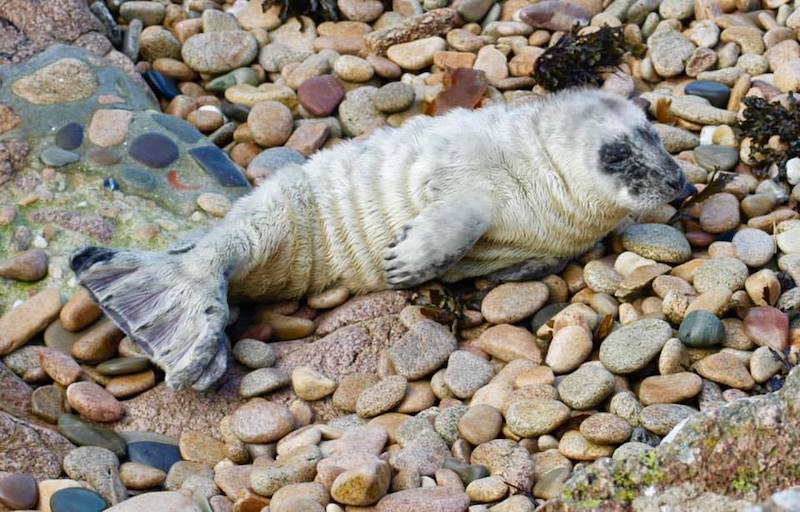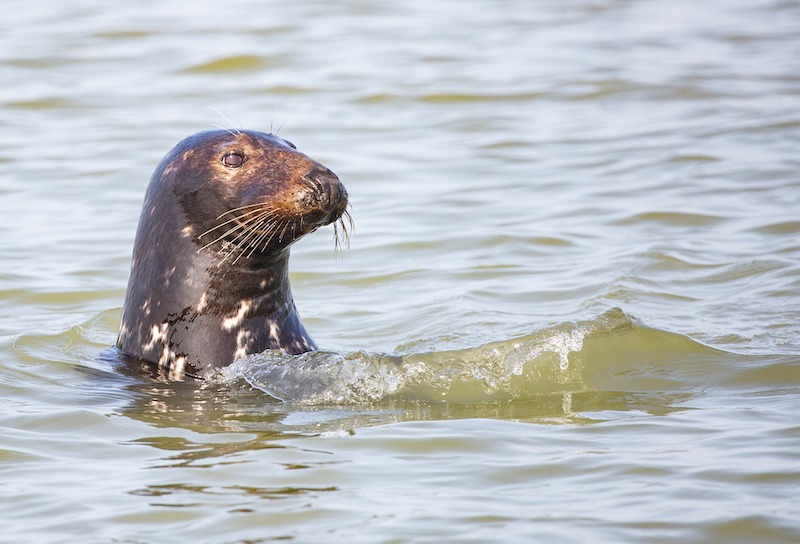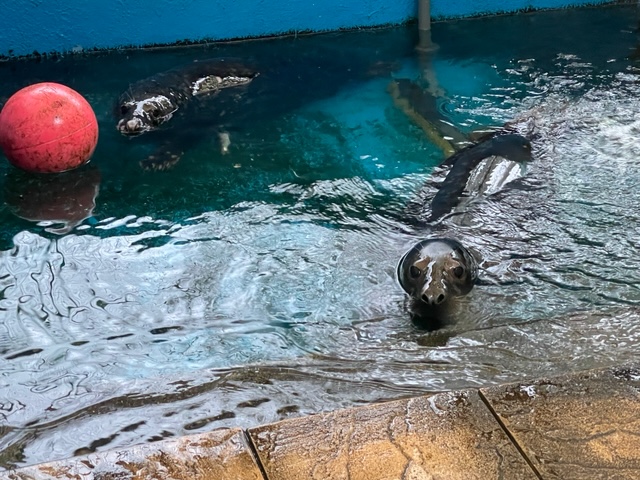

The GSPCA has given some insight into why it has seen an increase in the number of seals it looks after, and why staff release them where they do, after concerns were raised about the impact of the released seals on other wildlife in conservation areas such as the Humps.
The charity has looked after a record number of the mammals over the past year with up to seven in its care at any one time.
The seals are only taken to the animal shelter if they are underweight, malnourished, or need care for another ailment.
Once they've reached a healthy weight and met other milestones the charity looks to release them back into the wild.
The most recent release saw Henry and Echo let go at Portlet last weekend.
As well as Portlet, seals are often released off Jethou and Portinfer has been used as a release spot as well in the past.
In response to the latest seal release, some readers asked if the mammals could be released elsewhere, claiming there's been a "big impact on the fishery around rocquaine and Hanois".
Another man claimed "the Humps north of Herm are now stripped of all sea life from the seals," adding that "it’s all well and good rescuing the seals but in an environment with no natural predators they will strip our waters bare given half the chance".
It was also suggested that any seals rescued from Jersey waters should be released there rather than into Guernsey waters.
Six seals have been rescued from Jersey and cared for by the GSPCA over the past decade, compared to 22 recovered from Guernsey waters. One was rescued from off Jethou, one off Herm and one from Cornwall having made its way to Guernsey itself.
23 of the total number of seals rescued have so far been released back in to the wild with a small number perishing and a few remaining in the charity's care.

Pictured: Joey was rescued in Jersey and brought to Guernsey for treatment in November 2020.
GSPCA Manager Steve Byrne has said the charity is there to help "all the animals of Guernsey" including all species.
He acknowledged the increased number of seals needing their help saying that the "numbers of all species fluctuate due to a wide range of reasons".
"At the GSPCA we have seen a slight rise in the numbers of seals needing our help in the last decade from an average three a year to five a year," he said, adding that where those seals are then released back into the wild has very little impact on where they eventually end up.
"...seals can travel 30 to 75 miles a day so wherever they are released or born they are unlikely to stay in one particular place. Like all species they have favoured feeding spots but will travel as mentioned great distances."

Pictured: Seals can travel up to 75 miles a day when in good health.
Mature seals eat a variety of seafood including fish and crustaceans.
Infant seals will drink their mother's milk which is said to contain 60% fat and is therefore good for the pups to build up their own fat reserves needed for marine life.
Sick seal pups are fed every two to three hours while at the GSPCA - some needing to be tube-fed. Collectively the seals recuperating at the GSPCA eat hundreds of fish per day - with each seal pup eating 20 to 30 herring or mackerel each day.
It's noted on the GSPCA's website that seal numbers have doubled since the 1960s.
Mr Byrne also said that while seals "have faced many challenges" over the years including hunting, "their numbers will only rise if there is a healthy population and enough food resource otherwise they would travel to other areas.
"If we are seeing an average increased number that presumably is demonstrating good food resources as would the numbers of dolphins and porpoise that we are currently seeing in recent years."

Pictured: While at the GSPCA the seals are cared for in their own enclosure.
Mr Byrne said there is evidence that climate change is responsible for varying populations of marine life locally, which is being monitored. He said human interaction can also have an impact on the number of animals needing assistance and then their release back into the wild at a later date.
"It is difficult to know the exact reasons why each seal pup found injured or sick that comes in to us and other rescues but we are aware that quite often it is due to human interaction often people approaching them and scaring their mothers away wen they are too young to fend for themselves.
"It is being monitored the movement of many species in our waters due to rising sea temperatures due to global warming which is having an impact on all species in differing ways and this is showing from the sea turtles we see in local waters to the movement of marine mammal populations."
WATCH: Seven seals keep GSPCA busy
Respect seals and give them space, beachgoers are reminded
LETTER: If you spot a seal pup
Comments
Comments on this story express the views of the commentator only, not Bailiwick Publishing. We are unable to guarantee the accuracy of any of those comments.